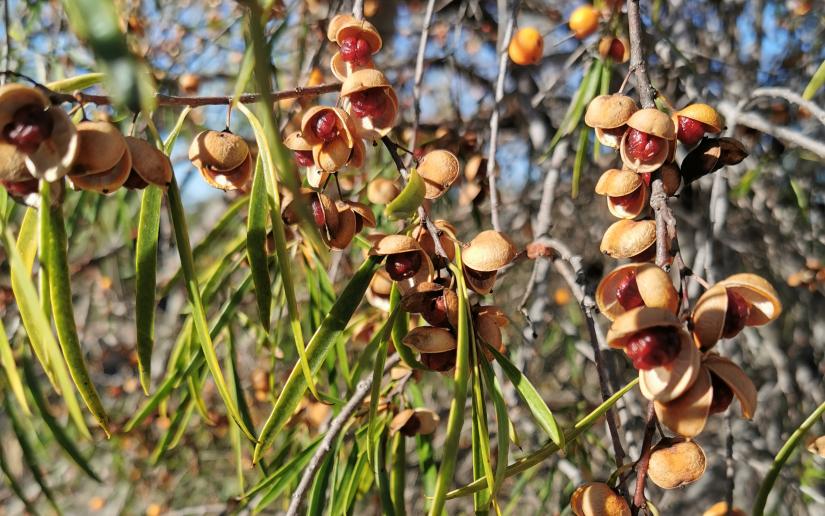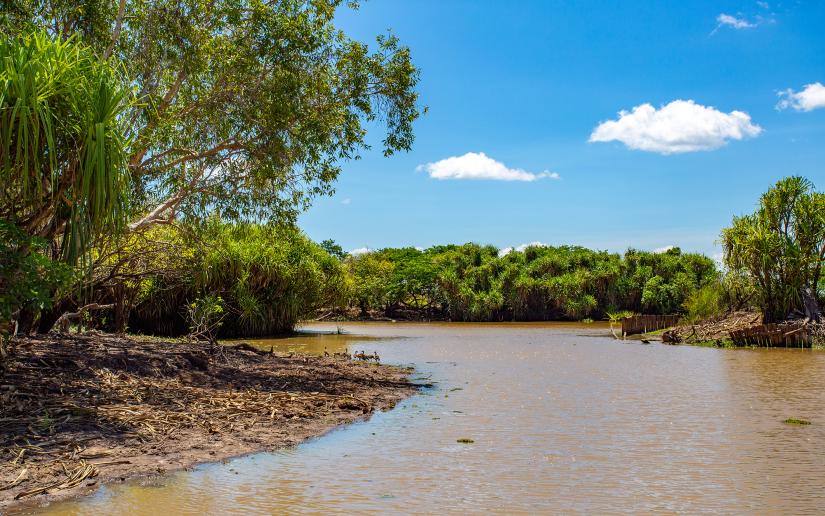A new research report presents a pathway to recognise and protect Indigenous biodiversity knowledge and practices in a way that ensures Australia’s First Nations communities can maintain control of and see benefit from their traditional knowledge.

Pittosporum angustifolium, or the gumbi gumbi plant, is widespread across most of inland Australia and has been used by Indigenous people in various ways as bush tucker or bush medicine. Its properties are now the subject of scientific investigation. Picture by Margaret Donald via Wikimedia Commons (CC BY-SA 4.0)
Undertaken for the Indigenous Knowledge Forum, the project Garuwanga: Forming a Competent Authority to Protect Indigenous Knowledge, has been led by Director of the Intellectual Property Program in the University of Technology Sydney (UTS) Faculty of Law Professor Natalie Stoianoff, supported by an Australian Research Council (ARC) Linkage Grant.
Professor Stoianoff said the report’s findings offer a critical pathway for governments, industry and other stakeholders to co-design, in full partnership with First Nations communities, effective measures to recognise and protect Indigenous biodiversity knowledge and practices, with full and equitable access and benefit-sharing with those communities.
Australia currently has no dedicated laws to protect Indigenous biodiversity-related knowledge. The Garuwanga report offers an important framework within which to develop ways of protecting this important knowledge.
Professor Natalie Stoianoff
“This report’s release comes at a critical moment in the nation’s history with the momentum to implement the Uluru Statement from the Heart and achieve an Indigenous Voice to Parliament,” Professor Stoianoff said.
“The Garuwanga project’s proposals provide opportunities for the realisation of Indigenous people’s rights and interests in biodiversity and traditional knowledge and at the same time ensure sound conservation and protection of Australia’s biodiversity heritage for the benefit of all.
“Australia currently has no dedicated laws to protect Indigenous biodiversity-related knowledge. The Garuwanga report offers an important framework within which to develop ways of protecting this important knowledge.”
Professor Stoianoff said Garuwanga set out options for legal structures for an Indigenous organisation to operate as a competent authority, regulating access and benefit-sharing of Indigenous biodiversity knowledge.
“It provides for a ‘tiered’ approach, with models for competent authorities established at local, regional and national levels. These competent authorities should be self-determining entities, independent from government, controlled and managed by Aboriginal and Torres Strait Islander peoples.”

Picture: Adobe Stock
Professor Stoianoff said the Garuwanga Report was also timely in a global context, with the recent UN Biodiversity conference (COP 15) agreeing on a Global Biodiversity Framework aimed at halting the alarming decline in the world’s biodiversity and preserve thirty per cent of lands and seas.
“Australia has some of the most important areas of biological diversity in the world, which have also been subject to severe and ongoing loss resulting from development and the impacts of human-induced climate change,” Professor Stoianoff said.
“Loss of biodiversity also results in the erosion of First Nations communities’ traditional knowledge and practices associated with biodiversity by demands from science, industry and other sectors for commercial products that are derived from, or which include elements of traditional knowledge.”
The Garuwanga Report has been developed in the context of the Nagoya Protocol on Access to Genetic Resources and the Fair and Equitable Sharing of Benefits Arising from their Utilization (ABS) to the Convention on Biological Diversity. The Nagoya Protocol, a supplementary instrument to the United Nations Convention on Biological Diversity, provides a legal mechanism to ensure that First Nations communities share equally in access to, and in any benefits that are derived from the wider use of this knowledge.

